Estimated delivery date is over and you are still pregnant. Since the exact date of conception is rarely known to anyone, that means if you have not yet given birth in the 41st week, then this is the norm. The child has already grown to 49–52 cm and weighs ~ 3.5 - 3.7 kg. You still have some time to better prepare for the long-awaited meeting with the baby.
Content
How many months?
The 41st obstetric week of pregnancy is the eleventh month of pregnancy and the 39th week of conception (here in detail about the timing and calculation methods).
Fetal development at the 41st week of pregnancy
Your baby is completely ready for birth. All its organs and systems are ready to begin to perform their functions outside the maternal womb. Being in the tummy, the baby grows stronger, gaining strength and gaining weight. He looks like a newborn baby.
Internal development
All the main organs - the heart, kidneys, liver and pancreas regularly do their job. Lung crumbs have accumulated the required amount of surfactant - a substance that helps the lung to straighten out for respiratory functions. The intestine is filled with the first feces, which will be released on the first day after birth.
The development of the central nervous system is suspended, it will continue after the baby is born. The vocal cords are being strengthened, which will soon be used to attract your attention. The bones of the skull continue to harden, which can cause tears in the birth canal of the mother during childbirth.
The membranes of the placenta, separating the fetus from the woman’s body, weaken and become more permeable, which allows the mother’s blood to mix with the baby’s blood. The baby receives your antibodies to protect the baby’s body from the onset of infections after childbirth. Thus, the mother transfers her immune experience to the child.
External development
At this time, the baby looks much more beautiful than one and a half to two months ago. His body has already been cleansed of the original protective grease, which remained only in the most delicate places - in the armpits and groin area. The cannon is gone, and the hairs on the head and fingernails continue to grow. Therefore, the birth of a baby with decent hair and long nails at the forty-first week is not uncommon.
Your baby’s body shapes have become more rounded, and the ear cartilage has become denser. He gains 30 g of fat per day, and his skin looks smooth and pink. The fetus has already grown, there is not enough space in the stomach, so the baby is quieter and makes fewer movements. But you should still feel at least ten jolts a day.
If the child does not have enough air, his movements and cramps begin to intensify.This can cause bowel cleansing. In this case, meconium gets into the amniotic fluid, which turns green, and the baby can swallow them. In such a situation, it may be necessary to connect the child to the breathing apparatus.
How the fetus is located in the uterus
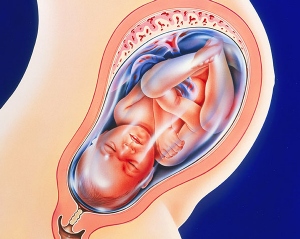 Normally, the baby at the end of pregnancy is located head down along the uterus. This ensures a comfortable passage through the birth canal. If the baby has taken a transverse position or is positioned head up, then pregnancy, as a rule, ends with a caesarean section. When the fetus is not very heavy, doctors assume the likelihood of a natural birth with gluteal previa.
Normally, the baby at the end of pregnancy is located head down along the uterus. This ensures a comfortable passage through the birth canal. If the baby has taken a transverse position or is positioned head up, then pregnancy, as a rule, ends with a caesarean section. When the fetus is not very heavy, doctors assume the likelihood of a natural birth with gluteal previa.
Woman's feelings at week 41
This week for every expectant mother is held in the languid expectation of giving birth. Most likely, the same thought often visits you: “It's already 41 weeks, why the birth does not start ...” But if you are under the vigilant control of your doctor, do not worry.
Pregnancy is considered postponed upon reaching the 42nd week. Typically, the border at 40 weeks is crossed by women bearing the first child.
The cervix continues to be saturated with hormones, becomes short and friable, the cervical canal opens. The height of the bottom of the uterus can reach 40 cm, and its elevation above the navel is 20 cm. The amount of amniotic fluid (amniotic fluid) is reduced, and the work of your body is aimed at preparing for the upcoming birth process.
Childbirth is coming - harbingers
- Training fights. Most women in position experience the so-called Brexton-Hicks contractions, accompanied by pain like menstruation. Usually, uterine contractions begin a few weeks before giving birth, and some they begin to bother only a couple of days before them.If the contractions are more intense than usual and occur at regular intervals, this means that prenatal contractions have begun, and you need to immediately get ready for the maternity hospital!
- Cork discharge The mucous plug, which closes the entrance to the uterus, comes out just before birth or a week or two before they begin.
- Prolapse of the abdomen. The abdomen falls a few weeks before the birth of the baby. The fact that it has already lowered can be understood by a decrease in pressure on the stomach, lungs and disappearance heartburn.
- Weight loss. In anticipation of a significant event, your body gets rid of excess fluid, because of which you can observe a slight decrease in weight.
- Isolation of colostrum. Expectant mother can detect stains on clothes at chest level. This is a secret secreted from the mammary glands, which the newborns eat the first day after birth.
- Frequent urination. A growing child puts pressure on his mother’s stomach more and more, which makes him constantly run to the restroom.
- Amniotic fluid outflow. The discharge of water is the same sure sign of the onset of labor, as are true contractions. Because the appearance on the underwear of colorless discharge in any quantity, grab everything you need and go to the hospital.
If you do not have any signs of an early birth, this is not a big deal. Pregnancy of each woman is individual, and many harbingers can appear right before the birth.
Pain
It is difficult for a woman in a position to endure the forty-first week, since during this period she can be disturbed by various painful sensations:
- due to the position of the fetus, the abdomen pulls and the lower abdomen hurts, when it is omitted, the pain intensifies;
- training mothers are increasingly worried about the expectant mother, which makes the stomach periodically “stony”;
- the child presses on the lower body, which causes pain in the perineum, as well as in the legs and lower back;
- the baby does not move very often, but his movements and blows to the stomach and liver can cause quite severe pain;
- itching of the skin of the abdomen;
- numbness of the limbs;
- pinching of the femoral nerve, as a result of which painful sensations in the sacrum are observed;
- exacerbation of chronic diseases and pain characteristic of them.
At this time, the woman feels awkward and clumsy. She is uncomfortable sleeping in almost any position, which can cause restless sleep. A frequent occurrence at term 41 is swelling of the limbs. The state of health of a pregnant woman is also worsened by bouts of irritability, which, it would seem, from scratch.
Allocations at the 41st week
At the forty-first obstetric week, light discharge is considered normal without any pungent odor. The appearance of mucus with brown or red veins is also a normal phenomenon. This is a mucous plug that can go away at a time, and can stand out in parts.
Amniotic fluid, which looks like a transparent, thin, odorless liquid, may leave you just before the birth. Often the water flows in the form of a gushing stream. There are cases when amniotic fluid only leaks. If you notice liquid discharge of green color, then this may indicate infection of the fetus or that meconium has entered the amniotic fluid. The latter indicates hypoxia. In any case, when leaving the waters you need to urgently get ready for the hospital.
What to do if childbirth does not begin
When pregnancy has already crossed the line at 40 weeks, and the baby still does not want to be born, the mother is afraid to “bear” the baby. But doctors do not consider pregnancy for a period of 41 weeks postponed. The PDD set by the doctor is only the estimated date of birth, which is calculated by the date of the last menstruation.
[sc: rsa]
But the exact date of birth depends not only on the monthly, but also on a number of other factors, such as the time of exit and the time of fertilization of the egg, the age of the future mother and the number of pregnancies a woman has had. Therefore, birth is considered the norm in the period from the 38th to the 42nd obstetric week. If there are no contractions and there are no signs of childbirth, your doctor may consider prescribing stimulation or cesarean section.
In the absence of contraindications, stimulation methods can be applied when:
- as a result of examination of the fetal condition and blood flow of the placenta, obvious signs of overtighting were found, that is, the placenta is no longer able to provide sufficient nutrition to the fetus;
- if the waters have already diverted, and labor does not begin;
- polyhydramnios is observed;
- the pregnancy is multiple and the uterus is already very distended.
Medical methods for stimulating labor include administering medications (e.g., prostaglandins, mefipristone) to the female body, opening the amniotic fluid, and mechanical methods. But you can recommend independent stimulation, which includes the following methods:
- Intimacy with a husband whose sperm contains prostaglandins that soften the cervix.If the mucous plug has already departed, it is better not to have sex.
- Stimulation of the nipples, leading to the release of oxytocin, which increases the tone of the uterus.
- The use of herbal preparations to empty the intestines, which provokes an increase in uterine tone.
If pregnancy proceeds normally, and there is no need for labor stimulation, you can continue to expect to see your baby. At this stage, the doctor will monitor your well-being even more closely. At the reception in the antenatal clinic, you will appreciate the indicators of your urine analysis, blood pressure, body weight and size of the abdomen. You may need a daily cardiotocography (CTG) procedure that monitors the fetal heart activity.
Often, at the 41st week, an ultrasound is prescribed. This study allows you to monitor the condition and size of the crumbs, the size of its head, the amount of amniotic fluid, the effectiveness of the placenta blood flow and the readiness of the cervix for childbirth.If you agreed to hospitalization, all necessary examinations will be carried out in the hospital.
What is relevant in the 41st week
- checking the availability of documents and bags for a trip to the hospital;
- medical supervision;
- proper nutrition;
- limiting the amount of fluid you drink and eat food;
- daily routine and regular rest;
- moisturizing the skin of the abdomen, chest and hips special cream or vegetable oil;
- moderate physical activity;
- walks in the open air;
- mastering a special breathing technique that will be used during childbirth;
- general cleaning of the house by joint efforts;
- distribution of household duties during your absence;
- communication with the baby, which is still in the tummy;
- Doing your favorite thing that causes you positive emotions.
The 41st week of pregnancy is a great time for dad and mom, who can finish all the necessary things before the birth of a new family member - a daughter or a son. Think of this week as extra time that your baby wants to spend in your closest proximity - in your tummy.
Video: stimulation + fees at the hospital

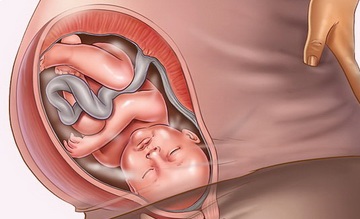
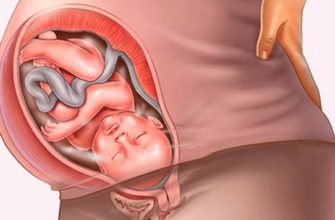
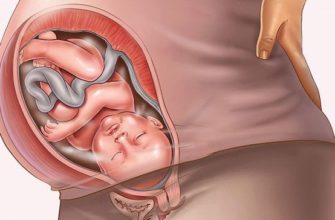
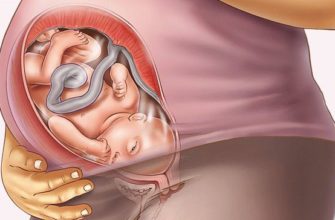
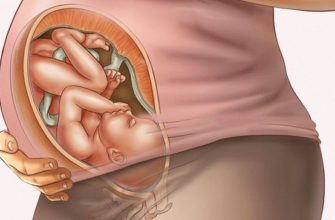
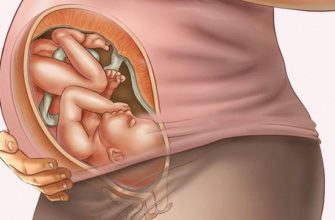
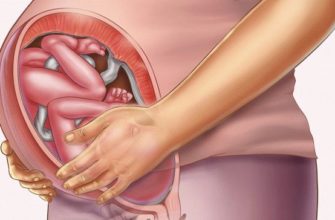

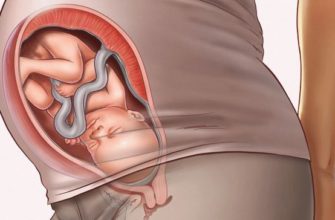
I gave birth at the 42nd week of pregnancy, that is, I was already transitioning for almost two weeks. She was already in the maternity hospital and I was assigned a programmable birth at eight in the morning of the next day, but I really wanted to give birth myself, I asked my baby to be born all night and he heard me, contractions started and I gave birth to a girl at seven in the morning.
I arrived at the maternity hospital on time with contractions, which, as it turned out, were false and I lay there for another week just waiting for the delivery, then I underwent ultrasound and it turned out that the waters were already dark and I had to give birth, otherwise the baby inside was already suffering. Appointed cesarean in the morning, at night a girl was born without a cesarean, all is well!